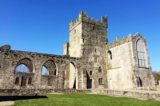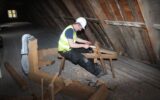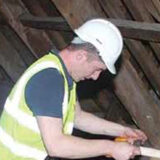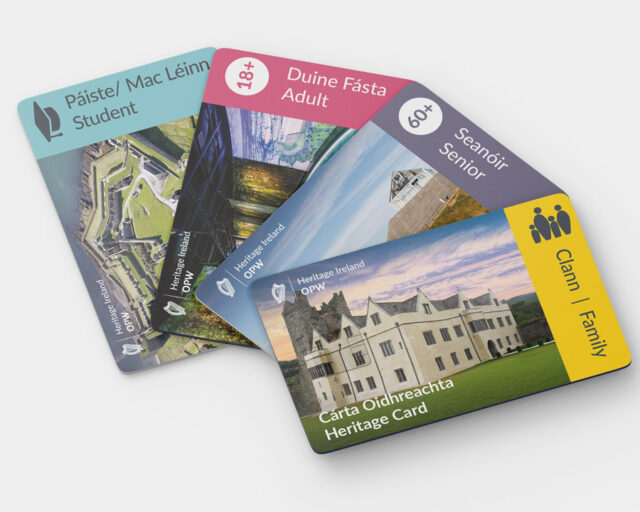My name is Brian Clancy from Fermoyle, Attanagh, Durrow, Co. Laois. I commenced my apprenticeship at Kilkenny National Monuments Depot on 22nd September 2014. I am currently on phase 5 of a Carpentry/Joinery Apprenticeship with Heritage Services within the Office of Public Works. The apprenticeship programme consists of seven phases – four on the job and three off the job phases. I have completed phase 2 in ETB Athlone Training Centre and phase 4 was completed at Limerick Institute of Technology. During these phases we covered theory and practical based assessments and at the end of each phase we had to complete and pass exams.
To date I have really enjoyed the apprenticeship programme working alongside skilled master craftspeople. I have worked on many different conservation projects on various monuments throughout the district, which include Jerpoint Abbey, Kells Priory and Tintern Abbey. I am currently working on a major conservation programme at Ormonde Castle, Carrick on Suir, Co. Tipperary. The conservation work includes the repair and replacement of timber sash windows and frames, this involves both on site repairs and making of new frames in the carpentry workshop in Kilkenny. I have also worked on the repair and replacement of original oak roof timbers and the lifting and replacing of original floor boards. While carrying out this type of work I have had the experience to use many different types of old hand tools which include draw knives, foes and a shaving horse. I have really enjoyed the apprenticeship programme so far and I look forward to completing my apprenticeship within Kilkenny National Monuments. It is great to learn the old hand skills and old traditional building methods within a friendly and supportive environment.
Brian Clancy
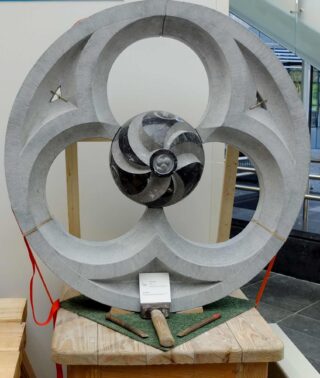
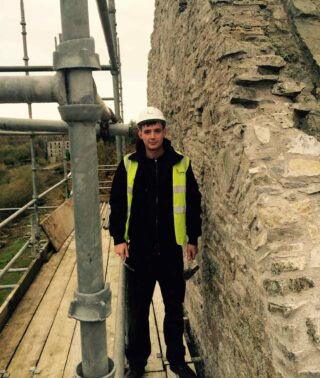
My name is Sean Hurton from Midleton in East Cork. While working in a medical factory in the town, I spotted an advert for an apprenticeship programme as a Stonemason/Stonecutter through the OPW. I applied immediately, not really knowing what I was getting into, but knowing that I loved stone walls, and would love to learn how to build them. I got a letter for an interview, attended, and a month or two later I got a letter back saying that I had been accepted.
I started Phase 1 in the Mallow National Monuments Depot, where we, a group of 4 apprentices, were greeted by Joe Daly and Maurice Fitzgerald, who talked to us about life in the OPW, the training we were going to receive throughout the apprenticeship, and some of the sites under their jurisdiction which include The Rock of Cashel, Charles Fort Kinsale, Buttevant Friary etc. My training began in Buttevant Friary, where my mentors were Pat O’ Brien, Craft Foreman, and Brendan Gleeson, Craft Mason. Brendan taught me skills from how to mix lime mortar properly, how to point, how to build and how to restore old stone walls, buildings and monuments. Then after four months of being on site, it was time to attend Phase 2 of my apprenticeship in Tralee, with Tom Little, Master Stonecutter.
There were 12 apprentices from all over the Country sent to Tralee to complete the 26 week course with Tom. The course is designed to teach students the practical work of hand-carving letters, shaping stones, interpreting working drawings, and making Arches from scratch, as well as the theory involved. At the end of the 26-week course, we all had a grasp of the basics of Stonecutting and we were given a series of exams before being sent back on site to put our new skills to the test.
One particular project I did in Tralee was to turn a big block of limestone into a smooth bowl. We did this through a series of techniques, critical for any stone carving project. Getting a surface of operation, squaring the top and bottom so that the stone is out of twist, chiselling drafts, punching down the waste, working from point to point, creating an arris using templates and working drawings etc. In the end, all of these methods stuck to us and it was a good way of learning the basic principles of Stonecutting.
At the moment, I am back in Tralee in Phase 4, learning how to make Celtic crosses, how to draw knot work, how to draw different Italics in numbers and letters, and how to make columns. As for the future, I hope to learn as much as possible through this apprenticeship program, so that in years to come I will be able enough to pass on the information of this course to a younger generation.
I will always regard the decision to take on this apprenticeship as one of the best choices I have ever made.
Sean Hurton
